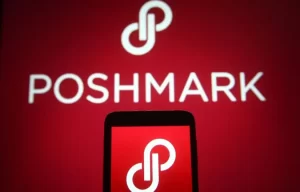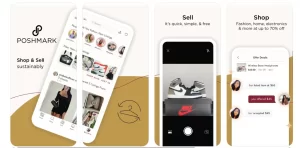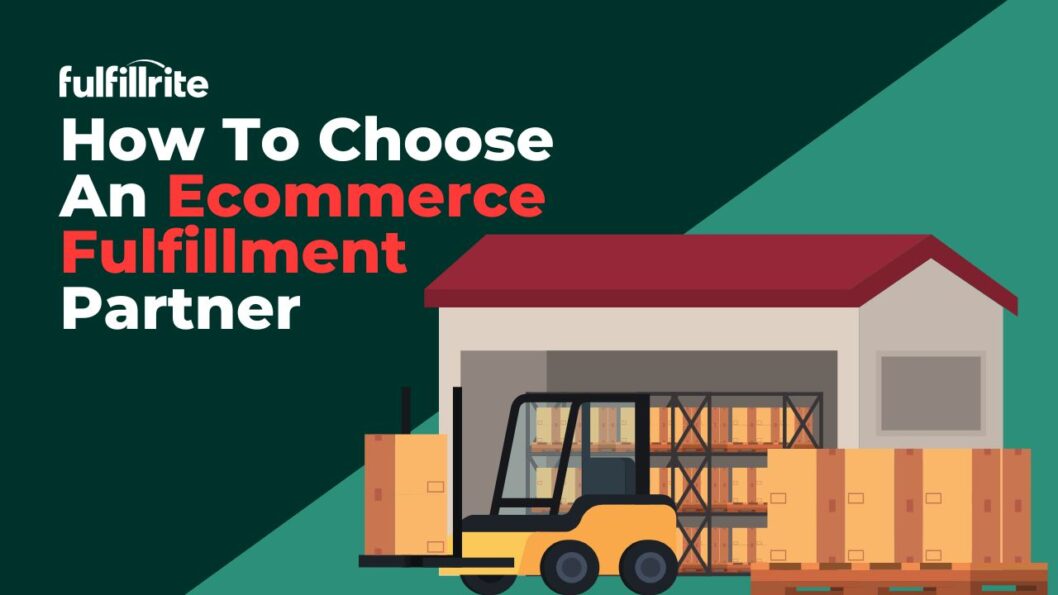
As the secondhand fashion economy thrives, Poshmark, one of North America’s largest resale platforms, has attracted millions of users. However, newcomers often prioritize two critical questions: Is Poshmark legal? Are transactions secure here? This article will delve into the platform’s operational mechanisms and provide an essential guide for buyers and sellers before engaging in transactions.
Is Poshmark legal
Poshmark was founded in 2011 and is headquartered in California, USA. It is a compliant enterprise regulated by law. Its business model is similar to eBay or Etsy, earning profits by connecting buyers and sellers and charging commissions. The platform supports transactions for fashion items such as clothing, shoes, bags, and accessories, and even allows the resale of luxury goods. As of 2025, Poshmark has over 80 million users and was acquired by the Korean internet giant Naver, which further strengthens its financial and operational stability.

From a legal perspective, Poshmark requires users to comply with intellectual property laws and prohibits the sale of counterfeit or prohibited items. If a user violates the rules, the platform may freeze the account or hand the case over to judicial authorities. Therefore, as long as users follow the platform’s rules, the transactions themselves are entirely legal. However, legality and safety are not entirely equivalent—personal operational risks in the buying and selling process still need to be guarded against.
How to Avoid Pitfalls in the Shopping Process
As a buyer, how can you avoid pitfalls in the shopping process? First, be alert to the risks of counterfeit goods and overly embellished product descriptions. Although the Poshmark platform allows individual sellers to upload various products, its authentication service for luxury goods only applies to items with a unit price exceeding $500. In other words, for items priced below this threshold, buyers often need to determine their authenticity on their own. Therefore, when purchasing lower-priced items, it is essential to carefully scrutinize them to avoid buying counterfeit goods due to a lack of professional authentication.
For this reason, we recommend that buyers take the following measures:
Prioritize reputable sellers
When browsing products, choose sellers who not only provide clear, multi-angle photos of the actual items but also offer detailed purchase receipts and product history records. This not only allows you to get a more intuitive understanding of the true condition of the item but also serves as important evidence for protecting your rights in case issues arise.
Leverage the Platform’s Q&A Feature
When product descriptions are unclear or raise questions, promptly use the platform’s Q&A feature to request additional details from the seller. Inquire about specifics such as measurements, materials, condition, and potential flaws to comprehensively evaluate the item’s true state and avoid being misled by overly polished descriptions.
Review Product Feedback and Transaction History
Check other buyers’ ratings and feedback to gauge the seller’s trustworthiness and the product’s actual quality. If you notice frequent negative reviews or complaints about counterfeit items, proceed cautiously or explore other sellers.
Understand the Dispute Resolution Process
If a received item has significant issues (e.g., mismatched description or suspected counterfeit), file a dispute claim within 3 days of delivery. Key to success is providing thorough evidence, including detailed photos of the item, chat records with the seller, and purchase receipts. This strengthens your case and safeguards your rights.
Shipping and Return Policies
When shopping on the Poshmark platform, buyers need to pay attention to the specific regulations regarding shipping fees and return policies. First, the shipping fee on Poshmark is a flat rate of $7.97 within the United States, and this fee is borne by the buyer. Although this fee is somewhat higher compared to regular parcel postage, it includes the logistics tracking and insurance services provided by the platform. This means that you can track the package’s shipping status in real time, and receive additional protection during transit, thereby reducing the risk of loss or damage.
On the other hand, the platform’s return policy is also worth noting. Poshmark adopts a “no returns unless there is a quality issue” principle; that is, unless the product has a severe quality issue that is inconsistent with its description, once the transaction is complete, buyers cannot directly return or exchange the product. If the received product differs significantly from the description or has quality issues, buyers can submit a dispute application within the specified time (usually within 3 days after receiving the product) and provide sufficient evidence to prove that there is an issue with the product. However, if the product only does not meet expectations because of personal dislike or minor flaws, the platform usually recommends that buyers handle it through resale. Understanding and adhering to this policy can help you make a thorough assessment before shopping and avoid the inconvenience caused by not meeting the conditions for returns.
Therefore, before placing an order, be sure to carefully read the product description and use the Q&A feature provided by the platform to communicate with the seller, ensuring that the product’s condition and quality meet your expectations. At the same time, you should also consider your actual needs to evaluate the shipping cost and product price, choosing the shopping method that suits you best.
Hidden Costs and Efficiency Traps You Need to Know
Commission Ratio and Pricing Strategy
On the Poshmark platform, commission rates and pricing strategies are two areas that sellers need to pay special attention to. Specifically, for orders under $15, Poshmark charges a flat commission of $2.95, while for orders over $15, it takes a commission at a rate of 20%. This type of fee means that the amount a seller actually gets in hand on the sale of a higher-priced item is significantly compressed. For example, a bag with a price tag of $100 will only end up costing the seller about $80 after the 20% commission deduction.
Therefore, in terms of pricing strategy, sellers should fully consider the impact of this deduction and set aside enough commission space to ensure that their profits are not disproportionately affected. To do this, consider the following strategies:
Reasonable Estimates of Costs and Profits
When setting the price of your merchandise, not only should you cover your cost of goods and operating costs, but you also need to factor in the cost of Poshmark’s commissions. Make sure that you can still realize the expected profit after deducting the commission.
Adopt a Bundling Strategy
By combining multiple items into a bundle package or increasing the number of items in a single order, you can effectively increase the customer unit price. This not only spreads out the fixed cost of shipping, but also reduces the impact of commissions on the profitability of individual items.
Adjustment of pricing strategy
For high-priced items, sellers can appropriately increase the pricing to ensure revenue due to the high commission percentage. However, it is important to note that the pricing should not be so high that it loses its competitiveness in the market, so you need to conduct reasonable market research to find a balance point.
Offer additional services or value
In order to have more flexibility in pricing, sellers can consider adding some value-added services, such as providing professional packaging, personalization or after-sales support, which can add value to the goods and make it easier for consumers to accept the slightly higher price.
Time Costs and Traffic Mechanisms
On the Poshmark platform, the cost of time and traffic mechanics are important factors that affect seller performance. The platform’s algorithms favor users who remain highly active, which means that only sellers who continue to engage and operate will get more exposure and sales opportunities on the platform. In order to increase the frequency of displaying their products, sellers need to regularly and frequently “share” their products to the community, and actively participate in all kinds of virtual “selling events” organized by the platform, such as promotions, discounts, etc. This will not only increase the frequency of displaying their products on the platform, but will also increase their sales opportunities. This not only improves the ranking of the product on the platform, but also attracts the attention of more potential buyers, thus increasing the likelihood of sales.
If sellers lack continuous operation and promotion, their items may be quickly overwhelmed by a large number of new listings on the shelves, resulting in a significant drop in traffic and affecting sales results. Therefore, rationalizing time and cost, updating and promoting items on a regular basis is an indispensable business strategy for every seller.
In addition, the Poshmark platform also provides an “Offer” feature that allows buyers to cut prices on products. In this regard, sellers need to set aside a certain amount of bargaining space when pricing their products, so that the actual amount of money received after bargaining will not be much lower than the expected revenue. Considering the possibility of bargaining in advance and giving appropriate concessions in pricing can better balance the bargaining needs of buyers and the profitability goals of sellers, and improve the success rate of the transaction.
Poshmark: Pros and Cons Comparison
| Advantages | Disadvantages |
|---|---|
| User-friendly interface ideal for beginners | High commission fees (20% for sales over $15) |
| Active community with high repeat purchase rates | Shipping limited to US & Canada only |
| Luxury authentication reduces scams | Dispute resolution can be slow (3-5 days) |
Poshmark vs. Other Resale Platforms: Which Best Fits Your Needs?
With the explosive growth of the resale economy, a multitude of secondhand trading platforms have emerged. Platforms like Poshmark, Depop, and Mercari each offer unique features—but how do you choose the one that best aligns with your needs
| Platform | Target Audience | Focus | Fee Structure | Logistics | Unique Features |
|---|---|---|---|---|---|
| Poshmark | Women aged 25–45 | Mid-to-high-end fashion, bags, home decor | • 20% commission (sales >15)<br>•2.95 flat fee (sales ≤$15) | Free prepaid labels (US/Canada only) | • Social features (“Share Closet,” follow networks) • Luxury authentication for items ≥$500 |
| Depop | Gen Z (90% users <26) | Vintage, streetwear, DIY/custom items | • 10% commission • 2.9% + $0.30 payment processing fee |
Seller-managed (global shipping allowed) | • Youth-centric aesthetic with TikTok integration • Strong emphasis on “thrifting culture” |
| Mercari | Broad demographic (18–65) | General goods (electronics, toys, etc.) | • 10% commission • 2% withdrawal fee |
Buyer-paid shipping or seller-arranged | • Fast sales for low-effort decluttering • No social features, transaction-focused |
| The RealReal | High-net-worth buyers | Luxury consignment (avg. price >$500) | • Up to 50% commission (varies by item category and price) | White-glove delivery (US only) | • Rigorous authenticity checks • Professional photography and pricing experts |
Summary: Who is suitable for Poshmark?
Poshmark is suitable for the following people:
● Individual sellers who want to clean out their closets quickly and make extra money;
● Shoppers who are looking for value for money and are keen on second-hand fashion;
● Small vintage stores or designer brands testing the waters of online sales.
Overall, Poshmark is a legitimate but “savvy” platform. Its core strength lies in the community atmosphere of its vertical categories, while its shortcomings are its high transaction costs and the potential risk of disputes. Before hitting the “buy” or “upload” button, ask yourself: have you weighed the convenience against the cost?

 11 min read
11 min read




